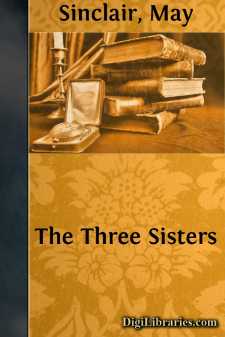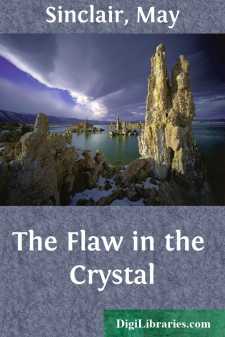Categories
- Antiques & Collectibles 13
- Architecture 36
- Art 48
- Bibles 22
- Biography & Autobiography 813
- Body, Mind & Spirit 142
- Business & Economics 28
- Children's Books 17
- Children's Fiction 14
- Computers 4
- Cooking 94
- Crafts & Hobbies 4
- Drama 346
- Education 46
- Family & Relationships 57
- Fiction 11829
- Games 19
- Gardening 17
- Health & Fitness 34
- History 1377
- House & Home 1
- Humor 147
- Juvenile Fiction 1873
- Juvenile Nonfiction 202
- Language Arts & Disciplines 88
- Law 16
- Literary Collections 686
- Literary Criticism 179
- Mathematics 13
- Medical 41
- Music 40
- Nature 179
- Non-Classifiable 1768
- Performing Arts 7
- Periodicals 1453
- Philosophy 64
- Photography 2
- Poetry 896
- Political Science 203
- Psychology 42
- Reference 154
- Religion 513
- Science 126
- Self-Help 84
- Social Science 81
- Sports & Recreation 34
- Study Aids 3
- Technology & Engineering 59
- Transportation 23
- Travel 463
- True Crime 29
The Three Sisters
by: May Sinclair
Description:
Excerpt
I
North of east, in the bottom, where the road drops from the High Moor, is the village of Garth in Garthdale.
It crouches there with a crook of the dale behind and before it, between half-shut doors of the west and south. Under the mystery and terror of its solitude it crouches, like a beaten thing, cowering from its topmost roof to the bowed back of its stone bridge.
It is the last village up Garthdale; a handful of gray houses, old and small and humble. The high road casts them off and they turn their backs to it in their fear and huddle together, humbly, down by the beck. Their stone roofs and walls are naked and blackened by wind and rain as if fire had passed over them.
They have the silence, the darkness and the secrecy of all ultimate habitations.
North, where the high road begins to rise again, the Vicarage stands all alone. It turns its face toward the village, old and gray and humble as any house there, and looks on the road sideways, through the small shy window of its gable end. It has a strip of garden in front and on its farther side and a strip of orchard at the back. The garden slopes down to the churchyard, and a lane, leading to the pastures, runs between.
And all these things of stone, the village, the Vicarage, the church, the churchyard and the gravestones of the dead are alike naked and black, blackened as if fire had passed over them. And in their grayness and their desolation they are one with each other and with the network of low walls that links them to the last solitary farm on the High Moor. And on the breast of the earth they show, one moment, solid as if hewn out of her heart, and another, slender and wind-blown as a tangle of gray thread on her green gown.
II
Through four of its five front windows the house gave back darkness to the dark. One, on the ground floor, showed a golden oblong, skirted with watery gray where the lamp-light thinned the solid blackness of the wall.
The three sisters, Mary, Gwendolen and Alice, daughters of James Cartaret, the Vicar of Garth, were sitting there in the dining-room behind the yellow blind, doing nothing. In their supine, motionless attitudes they seemed to be waiting for something to happen, to happen so soon that, if there had been anything to do, it was not worth their while doing it.
All three were alike in the small, broad faces that brooded, half sullen and half sad; in the wide eyes that watched vaguely; in the little tender noses, and in the mouths, tender and sullen, too; in the arch and sweep of the upper lips, the delicate fulness of the lower; in the way of the thick hair, parted and turned back over the brows in two wide and shallow waves.
Mary, the eldest, sat in a low chair by the fireside. Her hands were clasped loosely on the black woolen socks she had ceased to darn.
She was staring into the fire with her gray eyes, the thick gray eyes that never let you know what she was thinking. The firelight woke the flame in her reddish-tawny hair. The red of her lips was turned back and crushed against the white....












